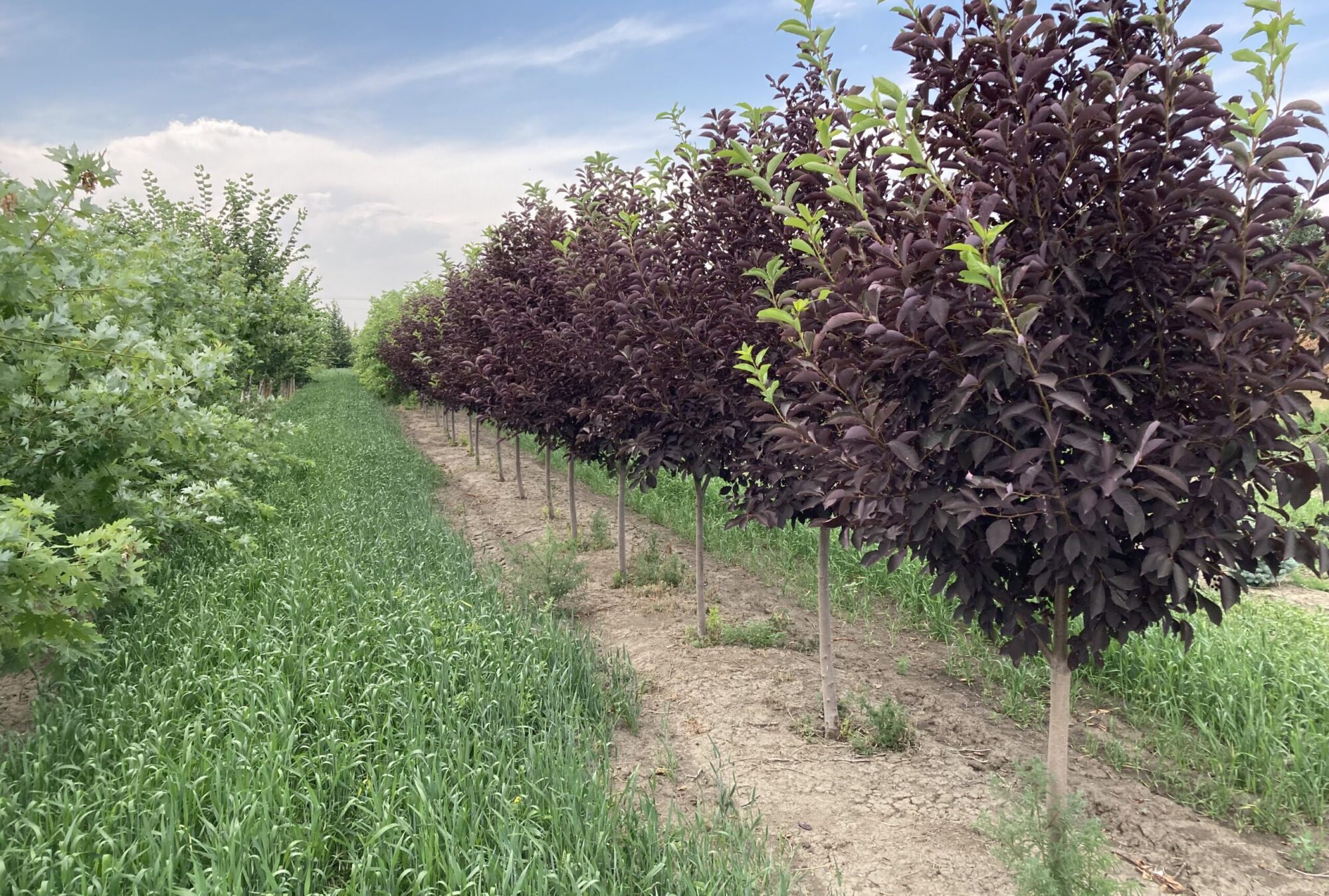SITE SELECTION
Selecting the proper site for tree planting is important. Keep in mind the mature size of the tree. Once you have selected a site, ensure that there are no underground utilities that interfere with the area of excavation. Place a utility location request with Alberta First Call.
mature size of the tree. Once you have selected a site, ensure that there are no underground utilities that interfere with the area of excavation. Place a utility location request with Alberta First Call.
HOLE PREPARATION – HOLE DEPTH
Dig a hole that is the exact depth of the root-ball. The proper depth will ensure that the root-ball sits on firm soil and that the tree is planted at the same grade (level) as it was growing in the field. Planting the tree too deep can cause the roots to suffocate because of lack of oxygen.
HOLE PREPARATION – HOLE WIDTH
The hole width should be approximately 8-12″ wider than the width of the root-ball. This extra width will allow you to adjust the tree when it is in the hole and will also allow you to back-fill soil effectively.
** Hole preparation can effectively be done with an auger on a skid steer. Auger drives and bits are available to rent at several local rental businesses.
**Below are the 32″, 36″ and 44″ basket dimensions. These dimensions are very helpful for hole preparation.
PLACING THE TREE
Using the D-rings on the tree basket, lift the tree with mechanical lift (skid steer or tractor) and place it in the prepared hole. The 32″ root-ball can be maneuvered by hand if necessary. This is the time to double-check that the root-ball is level with the existing grade of the site. This is also time to straighten the tree if needed.
BACKFILLING
Begin adding good soil around the perimeter of the root-ball. Continue to add soil within 10″ from the top of the hole.
CUTTING THE BURLAP AND BASKET
Now that the tree is stable and you have a shallow trench around the perimeter of the root-ball, proceed to cut and remove the nylon strapping, burlap and the top ring of the wire basket. Do not be concerned about the burlap and basket that remains in the hole. Roots grow through the burlap with ease. This photo below shows a tree that needed to be lifted 6 weeks after planing; you can see all the fresh roots growing through the root-ball!
after planing; you can see all the fresh roots growing through the root-ball!
FINISH BACKFILLING
Finish adding good soil to remaining area. Then construct a small dam or saucer aground the outer edge of the tree. This will allow the tree to be well watered without water running away form the tree. Once the tree has a had two good soakings (filling the up to the edge of the dam), you will notice that the soil has settled some. Top-off with additional soil as needed and water again.
STAKING
If the tree is in a location that is exposed to wind, we highly recommend staking. Using either a wood or metal post, drive the stake into en-excavated soil on the windward side of the tree. We recommend one stake to the southwest of the tree and if needed one stake to the southwest of the tree.
soil on the windward side of the tree. We recommend one stake to the southwest of the tree and if needed one stake to the southwest of the tree.
MULCHING
Adding mulch to the soil surface (on top of the root zone) will be beneficial. Mulch conserves water, keeps roots cooler and prevents weeds from growing. Be sure to keep the area around the tree trunk free from mulch. Pull back the mulch at least 6″ away from the trunk.
WATERING
Your trees will benefit from diligent watering; particularly during the first and second season. When watering, apply longer deeper soaking rather than frequent light irrigation. Soil type (the proportion of sand, silt and clay) will determine water frequency as well. Coarse soil types will need more frequent watering while fine texture (clay) soil will hold more water and hence need less frequent water.
FERTILIZER
Applying a high phosphate (10-52-10) fertilizer will stimulate new roots. Do not apply a high nitrogen fertilizer for the first 2-3 years.








